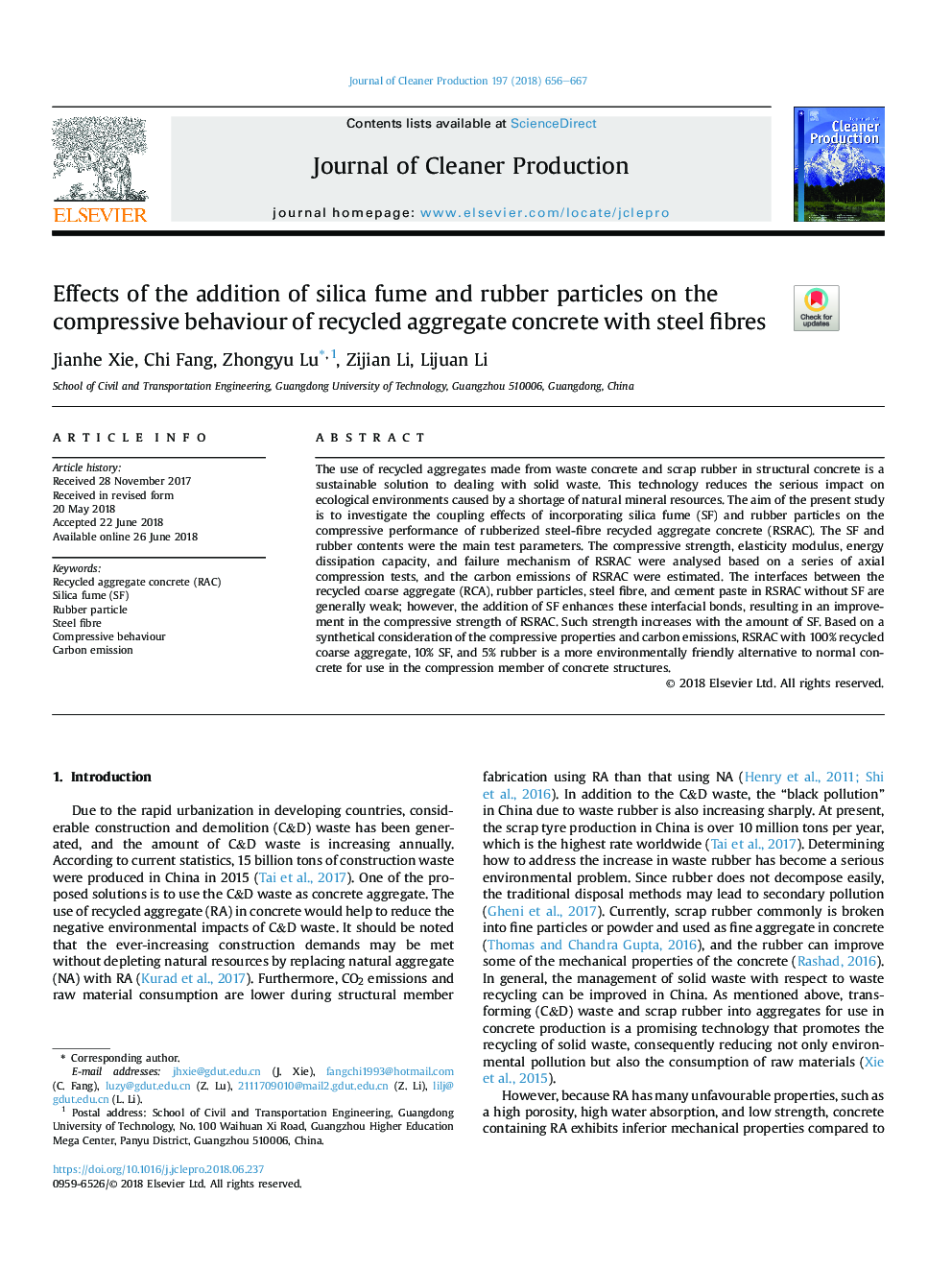| Article ID | Journal | Published Year | Pages | File Type |
|---|---|---|---|---|
| 8094020 | Journal of Cleaner Production | 2018 | 12 Pages |
Abstract
The use of recycled aggregates made from waste concrete and scrap rubber in structural concrete is a sustainable solution to dealing with solid waste. This technology reduces the serious impact on ecological environments caused by a shortage of natural mineral resources. The aim of the present study is to investigate the coupling effects of incorporating silica fume (SF) and rubber particles on the compressive performance of rubberized steel-fibre recycled aggregate concrete (RSRAC). The SF and rubber contents were the main test parameters. The compressive strength, elasticity modulus, energy dissipation capacity, and failure mechanism of RSRAC were analysed based on a series of axial compression tests, and the carbon emissions of RSRAC were estimated. The interfaces between the recycled coarse aggregate (RCA), rubber particles, steel fibre, and cement paste in RSRAC without SF are generally weak; however, the addition of SF enhances these interfacial bonds, resulting in an improvement in the compressive strength of RSRAC. Such strength increases with the amount of SF. Based on a synthetical consideration of the compressive properties and carbon emissions, RSRAC with 100% recycled coarse aggregate, 10% SF, and 5% rubber is a more environmentally friendly alternative to normal concrete for use in the compression member of concrete structures.
Keywords
Related Topics
Physical Sciences and Engineering
Energy
Renewable Energy, Sustainability and the Environment
Authors
Jianhe Xie, Chi Fang, Zhongyu Lu, Zijian Li, Lijuan Li,
